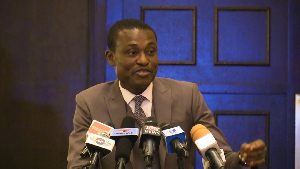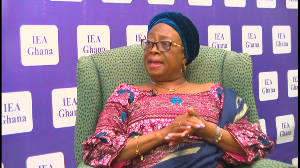Accra, July 28, GNA - The Ashanti, Eastern, Greater Accra and Central Regions are the most accident-prone regions accounting for about 80 per cent of fatalities for the second quarter of the year. The Brong Ahafo, Volta, Western, Upper East, Northern and the Upper West Regions followed in that descending order, according to statistics collated by the National Road Safety Commission (NRSC) for the period. This was brought to the fore at a press conference held by the NRSC in Accra on Thursday to update the media on the accident statistics for the second quarter and to correct negative reportage on accidents.
The statistics indicated that in all, the rate of occurrence of road accidents generally reduced compared to that of the second quarter of last year. Whereas last year recorded 3,411 reported cases, this year recorded a decrease of 6.3 per cent to 3,196. Vehicles involved in accidents last year were 5,144 but this reduced by 6.9 per cent to 4,789. Fatalities dropped by 5.2 per cent from 309 in the same quarter last year to 293.
However, there was an increase in cases regarded as serious. While last year's record stood at 787, this year's was 860, a difference of 73, or 9.3 per cent. Last year, minor cases were 2,315 but stood at 2,043 this year, recording a difference of 272, or 11.7 per cent. Persons injured in the same period last year were 2,704 while the number for this year was 2,358, a difference of 346, or 12.8 per cent. Person killed decreased by 9.9 per cent from 385 to 347 this year. A breakdown of the statistics indicated that Ashanti Region recorded the highest number of fatalities, accounting for 92 deaths representing 26.5 per cent of the total number of people killed nationwide, with the 613 persons injured and 895 cars involved in accidents.
The statistics indicated that 51 people, representing 14.7 per cent, died in the Eastern Region, with 212 people injured and 341 cars involved. Greater Accra Region recorded lesser fatalities but had the highest number of vehicles involved in accidents, with 46 persons killed representing 13.3 per cent of deaths, 584 injured and 2,186 vehicles involved.
Forty-five people were killed in the Central Region, representing 13.0 per cent, while the number of the injured stood at 347, with 355 vehicles involved. Tema, which was treated as region, posted 40 deaths, 295 injured and 409 vehicles involved. Brong Ahafo recorded 19 deaths, 86 persons injured and 115 cars involved. The Volta Region followed with 18 deaths, with 31 people injured and 179 vehicles involved. The Western Region had 13 deaths, 87 injured and 170 vehicles involved while Upper East recorded 11 deaths, 25 injured and 52 vehicles involved.
Northern Region recorded nine deaths, 54 people injured with 71 vehicles involved while the Upper West Region posted three deaths, 24 injured and 16 vehicles involved. Chief Superintendent Victor Tandoh, Commander of the Motor Transport and Traffic Unit of the Police Service, said the Driver and Vehicle Licensing Authority (DVLA) figures indicated there were more than 700,000 thousand vehicles nationwide and Accra had over 50 per cent of them. He said the traffic congestion was a contributory factor to the minor nature of accidents and fewer fatalities in Accra. He said the MTTU's efforts over the past four years to bring down the rate of accidents in Accra with the support of the media were yielding results.
Mr Tandoh attributed the high fatality rate in the Ashanti Region to fatigue from long driving hours because the Region was a major travelling point. Other factors could be attributed to speeding because of the good nature of roads, such as the Kumasi-Obuasi and the Kumasi- Kintampo roads. He pointed out that road accidents could be curbed if vehicle owners inspected the driving licences of those they employed to ensure that the grade of the licence corresponded with the vehicle the driver was allowed to handle.
Mrs May Obiri-Yeboah, a Senior Staff of the NRSC, pleaded with traditional authorities to support the Commission by not pleading with the Police to release persons, who had committed traffic offences. She said the Commission was taking its education on road safety to the churches and mosques as well as targeting Ministries, Department and Agencies that had large fleets of vehicles to ensure that the drivers were trained in road safety procedures.
General News of Thursday, 28 July 2005
Source: GNA
















